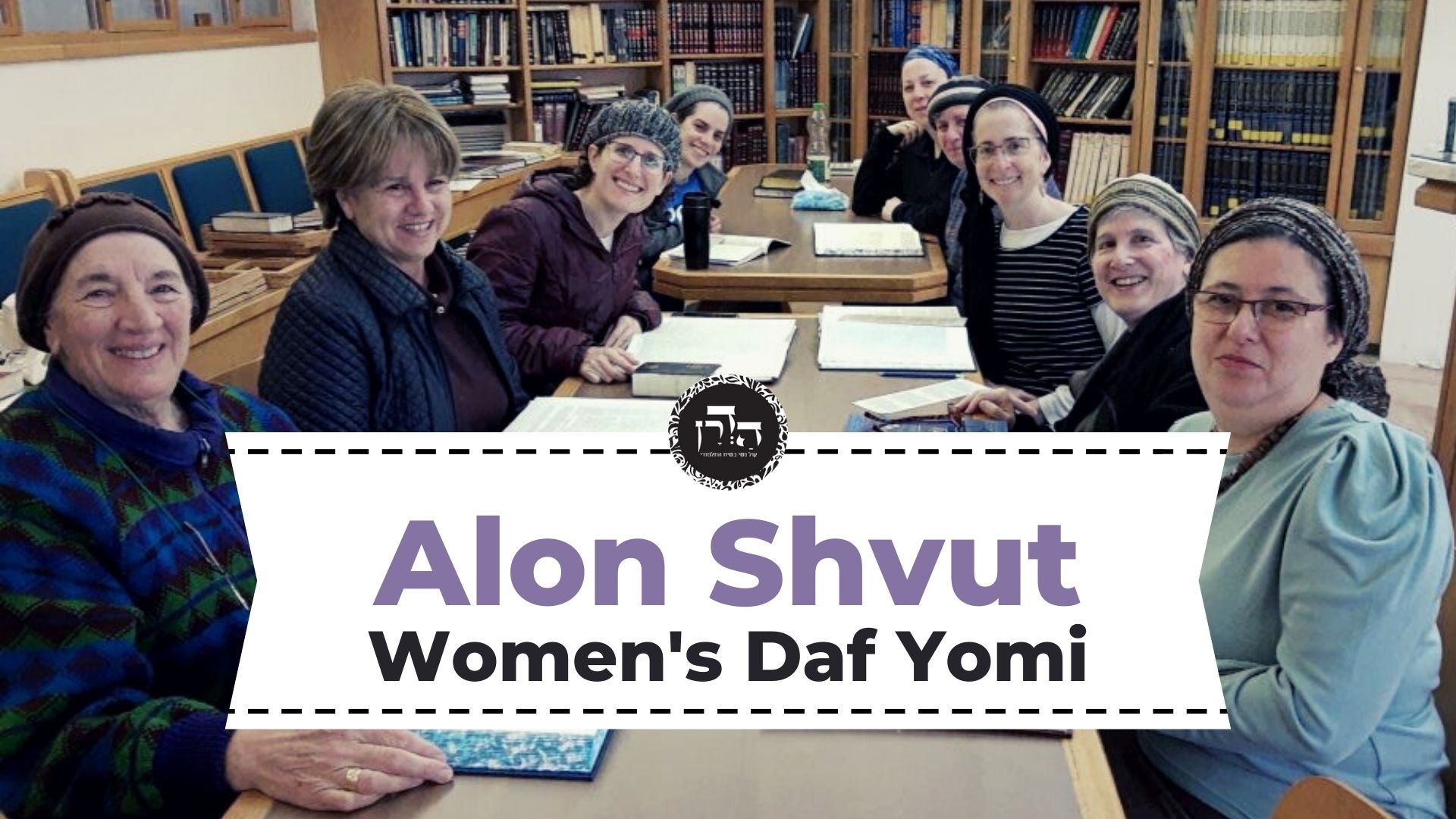Eruvin 74
עַד שֶׁיְּהוּ בָּתִּים וַחֲצֵירוֹת פְּתוּחִין לְתוֹכוֹ. וּשְׁמוּאֵל אָמַר: אֲפִילּוּ בַּיִת אֶחָד וְחָצֵר אַחַת. וְרַבִּי יוֹחָנָן אָמַר: אֲפִילּוּ חוּרְבָּה.
unless there are houses and courtyards opening into it. This formulation implies that there must be at least two courtyards, each of which contains at least two houses. In the absence of these conditions, however, it is not considered an alleyway that can be permitted by means of a side post or a cross beam. And Shmuel said: Even one house without a courtyard and one courtyard with just one house is enough. And Rabbi Yoḥanan said: Even a ruin and a courtyard with a house suffice for a side post or a cross beam to render carrying in an alleyway permitted.
אֲמַר לֵיהּ אַבָּיֵי לְרַב יוֹסֵף: אָמַר רַבִּי יוֹחָנָן אֲפִילּוּ בִּשְׁבִיל שֶׁל כְּרָמִים? אֲמַר לֵיהּ: לָא אָמַר רַבִּי יוֹחָנָן אֶלָּא בְּחוּרְבָּה, דַּחֲזֵי לְדִירָה. אֲבָל שְׁבִיל שֶׁל כְּרָמִים, דְּלָא חֲזֵי לְדִירָה — לָא.
Abaye said to Rav Yosef: Did Rabbi Yoḥanan say that even a vineyard path and a courtyard with a house suffice to allow a side post or a cross beam to render carrying in the alleyway permitted? He said to him: Rabbi Yoḥanan said his ruling only in the case of a ruin, which is fit to serve as a residence. However, a vineyard path, which is not fit to serve as a residence, is not sufficient.
אָמַר רַב הוּנָא בַּר חִינָּנָא: וְאַזְדָּא רַבִּי יוֹחָנָן לְטַעְמֵיהּ, דִּתְנַן (אָמַר רַבִּי שִׁמְעוֹן): אֶחָד גַּגּוֹת וְאֶחָד קַרְפֵּיפוֹת וְאֶחָד חֲצֵרוֹת — רְשׁוּת אַחַת הֵן לְכֵלִים שֶׁשָּׁבְתוּ לְתוֹכָן, וְלֹא לְכֵלִים שֶׁשָּׁבְתוּ בְּתוֹךְ הַבַּיִת.
Rav Huna bar Ḥinnana said: And Rabbi Yoḥanan followed his regular line of reasoning in this regard, as we learned in a mishna that Rabbi Shimon said: Roofs, enclosures, and courtyards are all considered one domain with regard to vessels that rested inside them at the beginning of Shabbat. Therefore, it is permitted to carry vessels that were in one of these areas at the beginning of Shabbat to any of the other areas. However, they are not considered the same domain with regard to vessels that rested inside the house at the beginning of Shabbat. If the homeowners did not join the courtyard by means of an eiruv, it is prohibited to carry vessels from their houses to the roof, enclosure, or courtyard.
וְאָמַר רַב: הֲלָכָה כְּרַבִּי שִׁמְעוֹן, וְהוּא שֶׁלֹּא עֵירְבוּ. אֲבָל עֵירְבוּ, גָּזְרִינַן דִּילְמָא אָתֵי לְאַפּוֹקֵי מָאנֵי דְבָתִּים לְחָצֵר.
And Rav said: The halakha is in accordance with the opinion of Rabbi Shimon. And this is only in a case where the residents of the courtyards did not establish an eiruv for each courtyard, so that they may only carry the vessels left in the courtyards, but they may not take out vessels from their houses into their courtyards. However, if they established an eiruv for each courtyard, we decree against carrying even vessels that were in the courtyard when Shabbat began, lest they come to take out objects from their houses to the courtyard. This would lead to the mistake of carrying those objects from one courtyard to another, which is prohibited.
וּשְׁמוּאֵל אָמַר: בֵּין עֵירְבוּ וּבֵין לֹא עֵירְבוּ. וְכֵן אָמַר רַבִּי יוֹחָנָן: הֲלָכָה כְּרַבִּי שִׁמְעוֹן, בֵּין עֵירְבוּ וּבֵין לֹא עֵירְבוּ. אַלְמָא: לָא גָּזְרִינַן דִּילְמָא אָתֵי לְאַפּוֹקֵי מָאנֵי דְבָתִּים לְחָצֵר, הָכָא נָמֵי לָא גָּזְרִינַן דִּילְמָא אָתֵי לְאַפּוֹקֵי מָאנֵי דְחָצֵר לְחוּרְבָּה.
And Shmuel said: The halakha is in accordance with the opinion of Rabbi Shimon, whether the residents of the courtyards established an eiruv for each courtyard or whether they did not establish an eiruv for each courtyard. And so too, Rabbi Yoḥanan said: The halakha is in accordance with the opinion of Rabbi Shimon, whether they established an eiruv for each courtyard or whether they did not establish an eiruv for each courtyard. Apparently, Rabbi Yoḥanan maintains that we do not decree against carrying vessels that began Shabbat in the courtyard lest they come to take out objects from their houses to the courtyard. Here too, with regard to an alleyway that contains a ruin, we do not decree against carrying in the alleyway lest they come to take out objects from the courtyard to the ruin by carrying it through the alleyway. Although the ruin is not included in the eiruv, as it has no residents, and one may not carry objects into it, Rabbi Yoḥanan is not concerned that one might come to carry in this prohibited manner.
יָתֵיב רַב בְּרוֹנָא וְקָאָמַר לְהָא שְׁמַעְתָּא. אֲמַר לֵיהּ רַבִּי אֶלְעָזָר בַּר בֵּי רַב: אָמַר שְׁמוּאֵל הָכִי?! אֲמַר לֵיהּ: אִין, אֲמַר לֵיהּ: אַחְוִי לִי אוּשְׁפִּיזֵיהּ, אַחְוִי לֵיהּ. אֲתָא לְקַמֵּיהּ דִּשְׁמוּאֵל, אֲמַר לֵיהּ: אֲמַר מָר הָכִי? אֲמַר לֵיהּ: אִין.
Rav Beruna sat and recited this halakha stated by Shmuel, that an alleyway containing one house and one courtyard can be rendered permitted for carrying by means of a side post or a cross beam. Rabbi Elazar, a student of a Torah academy, said to him: Did Shmuel really say this? Rav Beruna said to him: Yes, he did. He said to him: Show me his lodging and I will go and ask him myself, and he showed him. Rabbi Elazar came before Shmuel and said to him: Did the Master actually say this? Shmuel said to him: Yes, I did.
וְהָא מָר הוּא דְּאָמַר: אֵין לָנוּ בְּעֵירוּבִין אֶלָּא כִּלְשׁוֹן מִשְׁנָתֵינוּ, שֶׁהַמָּבוֹי לַחֲצֵירוֹת כֶּחָצֵר לַבָּתִּים. אִישְׁתִּיק.
Rabbi Elazar raised the following objection: Wasn’t it the Master himself who said concerning a different issue: With regard to the halakhot of eiruv, we have only the wording of our mishna. The mishna states that an alleyway is to its courtyards like a courtyard is to its houses, which indicates that an alleyway must have at least two courtyards in order to be considered an alleyway and be rendered permitted for carrying through a side post or cross beam. Shmuel was silent and did not answer him.
קַבְּלַהּ מִינֵּיהּ, אוֹ לָא קַבְּלַהּ מִינֵּיהּ? תָּא שְׁמַע, דְּהָהוּא מְבוֹאָה דַּהֲוָה דָּיַיר בֵּיהּ אַיְבוּת בַּר אִיהִי, עֲבַד לֵיהּ לִחְיָיא, וּשְׁרָא לֵיהּ שְׁמוּאֵל,
The Gemara asks: Did Shmuel’s silence indicate that he accepted Rabbi Elazar’s objection and retracted his statement, or did he not accept it from him? The Gemara attempts to bring a proof from the following incident. Come and hear: There was a certain alleyway that Ivut bar Ihi lived in, which contained only one house and one courtyard. He erected a side post for it, and Shmuel permitted him to carry in it.
אֲתָא רַב עָנָן שַׁדְיֵהּ. אָמַר: מְבוֹאָה דְּדָיַירְנָא בֵּיהּ וְאָתֵינָא מִשְּׁמֵיהּ דְּמָר שְׁמוּאֵל, נֵיתֵי רַב עָנָן בַּר רַב נִישְׁדְּיֵיהּ מִן?! שְׁמַע מִינַּהּ לָא קַיבְּלַהּ מִינֵּיהּ.
Following Shmuel’s death, Rav Anan came and threw the side post down, thus indicating to Ivut bar Ihi that it is prohibited to carry in the alleyway, as a side post is effective only for an alleyway that has at least two courtyards containing at least two houses each. Ivut bar Ihi said with resentment: The alleyway in which I have been living and walking based on a ruling in the name of Master Shmuel, shall Rav Anan bar Rav come now and throw its side post away from me? The Gemara comments: Learn from the fact that this side post remained intact throughout Shmuel’s lifetime that he did not accept Rabbi Elazar’s objection.
לְעוֹלָם אֵימָא לָךְ קַיבְּלַהּ מִינֵּהּ, וְהָכָא חַזָּנָא הוּא דַּהֲוָה אָכֵיל נַהֲמָא בְּבֵיתֵיהּ וְאָתֵי בָּיֵית בְּבֵי כְנִישְׁתָּא.
The Gemara rejects this proof. Actually, you can say that Shmuel accepted Rabbi Elazar’s objection and retracted his opinion, and here there was a synagogue attendant [ḥazzana] who would eat bread in his own house that was located elsewhere, but would come and sleep in the synagogue, which was open to the alleyway.
וְאַיְבוּת בַּר אִיהִי סָבַר: מְקוֹם פִּיתָּא גָּרֵים. וּשְׁמוּאֵל לְטַעְמֵיהּ דְּאָמַר: מָקוֹם לִינָה גָּרֵים.
And Ivut bar Ihi holds that the place where a person eats his bread determines his place of residence. Therefore, he did not consider the synagogue a residence, as the attendant would eat elsewhere, and Ivut bar Ihi thought that Shmuel had permitted him to set up a side post for his alleyway even though he lived there by himself. In fact, however, this was not the case, as Shmuel followed his regular line of reasoning, as he said: The place where a person sleeps determines his place of residence. Since the attendant would sleep in the synagogue, it was considered a residence. Consequently, the alleyway contained two houses and courtyards, and could be made permitted for carrying by means of a side post or a cross beam.
אָמַר רַב יְהוּדָה אָמַר רַב: מָבוֹי שֶׁצִּידּוֹ אֶחָד גּוֹי וְצִידּוֹ אֶחָד יִשְׂרָאֵל — אֵין מְעָרְבִין אוֹתוֹ דֶּרֶךְ חַלּוֹנוֹת לְהַתִּירוֹ דֶּרֶךְ פְּתָחִים לַמָּבוֹי.
Rav Yehuda said that Rav said: With regard to an alleyway, one side of which was occupied by a gentile and one side of which was occupied by a Jew, and the house of the Jew was connected to the houses of other Jews via windows but not via doors, and those other houses open directly into the public domain, the residents of the houses on the side of the alleyway where the Jews live may not establish an eiruv through the windows in order to render it permitted for the residents of the other houses to carry through the doors of the house leading to the alleyway.
אֲמַר לֵיהּ אַבָּיֵי לְרַב יוֹסֵף: אָמַר רַב אֲפִילּוּ בְּחָצֵר? אֲמַר לֵיהּ: אִין, דְּאִי לָא אָמַר מַאי?
Abaye said to Rav Yosef: Did Rav say this even with regard to a courtyard, one side of which was occupied by a gentile and the other side of which was occupied by a Jew whose house was connected through windows to the houses of other Jews? He said to him: Yes, as even if he did not say so, what would be the difference? It is the exact same principle.
הֲוָה אָמֵינָא טַעְמָא דְּרַב מִשּׁוּם דְּקָסָבַר: אֵין מָבוֹי נִיתָּר בְּלֶחִי וְקוֹרָה עַד שֶׁיְּהוּ בָּתִּים וַחֲצֵירוֹת פְּתוּחִין לְתוֹכוֹ.
Abaye responded: I would have said that the rationale for the opinion of Rav is because he holds that an alleyway cannot be rendered permitted for carrying within it with a side post and a cross beam unless there are houses and courtyards opening into it.
וְתַרְתֵּי לְמָה לִי! צְרִיכָא, דְּאִי מֵהַהִיא —
Rav Yosef said: If that were the reason, why would I need two rulings regarding the same issue? Rav already stated that an alleyway can be rendered permitted for carrying within it only if it has houses and courtyards opening into it. Abaye explained that both rulings are necessary. As, if Rav had taught this halakha only from that general ruling,
























